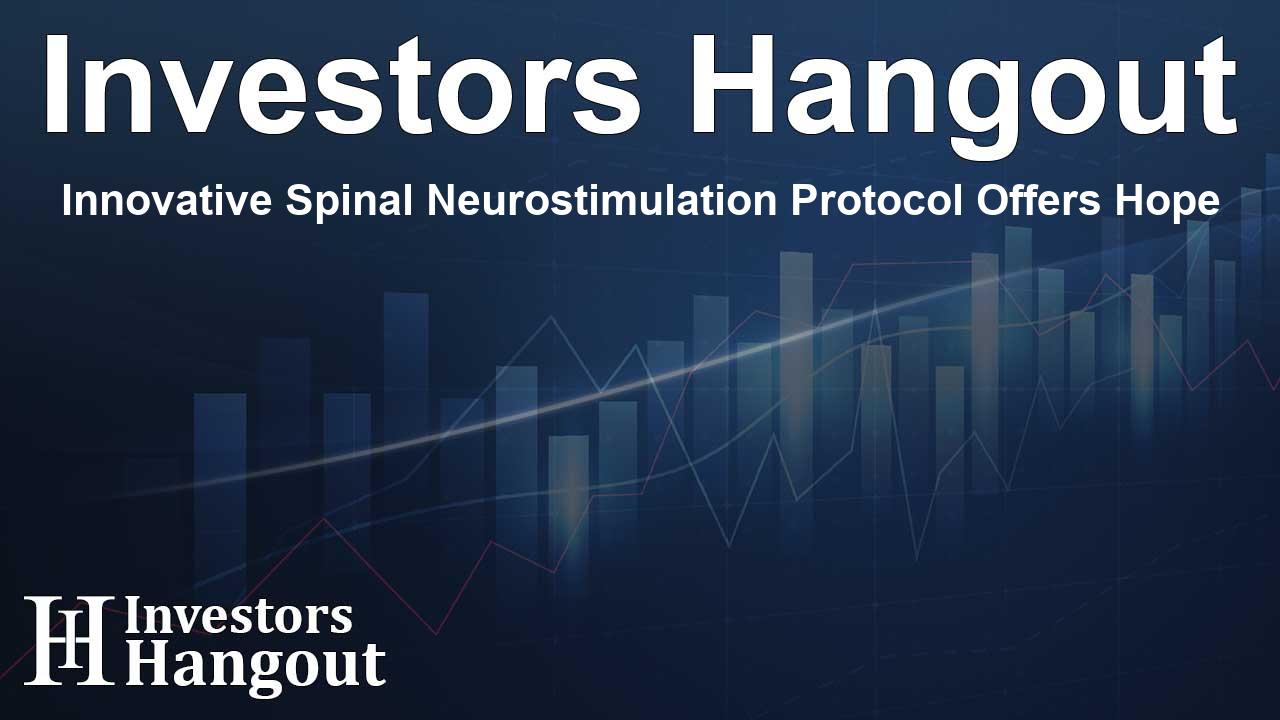Innovative Spinal Neurostimulation Protocol Offers Hope

Promising Advances in Spinal Neurostimulation
The transformative journey of spinal cord injury treatment has taken a significant leap forward, spotlighting innovative approaches that spark hope for many patients. An exciting study, stemming from the combined expertise of IRCCS San Raffaele Hospital and Vita-Salute San Raffaele University, sheds light on a new high-frequency spinal stimulation protocol. This pioneering method is designed to facilitate motor recovery while effectively reducing muscular spasticity.
Understanding Muscle Spasticity
Muscle spasticity is a common complication following spinal cord injuries, resulting from disrupted communication between the spinal cord and the brain. This disconnection generates challenges such as limb paralysis and involuntary muscle contractions. Recent findings indicate that nearly 70% of those affected by spinal cord injuries experience varying degrees of spasticity. Traditional treatments, which often involve low-frequency electrical stimulation, have displayed limited success.
New Research and Patient Outcomes
The recent research examined two patients who had suffered incomplete spinal cord injuries. These individuals underwent a novel procedure involving the implantation of a spinal cord neurostimulator, a device that extends beyond pain management. Through continuous, targeted high-frequency stimulation coupled with personalized rehabilitation efforts, these patients reported remarkable improvements in muscle strength and walking ability.
The applied stimulation not only enhanced their motor control but also mitigated the persistent reflexes contributing to muscle spasticity. This protocol has ushered in a new era characterized by more fluid and natural movements.
Details of the Study
Both patients participated in a rigorous rehabilitation program integrating both low and high-frequency electrical stimulation with extensive motor exercises. Remarkably, after just one year, one patient managed to walk 175 meters without any assistance from the neurostimulator. This noteworthy development showcases the potential of integrating advanced technology into rehabilitation exercises.
Lead researcher Simone Romeni noted how high-frequency stimulation can effectively inhibit spinal hyperreactivity, a state that typically leads to pathological muscle activity. By utilizing kilohertz frequency ranges, their approach stands in stark contrast to previous low-frequency techniques, potentially offering a more effective solution for reducing muscle spasms.
Significant Implications for Neuroengineering
Professor Silvestro Micera, a key figure in the study, expressed excitement over the implications of their findings for neuroengineering. The spinal cord protocol not only exemplifies successful neurorehabilitation but also envisions a future filled with innovative technologies designed to improve the quality of life for individuals enduring motor disabilities.
The collaborative nature of this project highlights the benefits of integrating various disciplines to realize a shared goal: enhancing functional recovery outcomes for patients suffering from spinal injuries.
Future Directions and Clinical Studies
Planning is underway for additional clinical trials involving a larger population of patients. The objective is to corroborate preliminary findings and possibly expand treatment indications to accommodate diverse clinical conditions. Both capable researchers are optimistic about paving new pathways in the realm of motor neurorehabilitation.
The beauty of such advancements lies not only in their promising nature but also in their humane approach, ensuring patients remain the focal point. As the research team reflects on their journey thus far, gratitude resonates towards the patients who have put their trust in the innovative procedures.
Frequently Asked Questions
What is the significance of the spinal neurostimulator?
The spinal neurostimulator is crucial in treating spinal cord injuries, enhancing recovery through high-frequency stimulation that can improve motor functions and decrease spasticity.
How does high-frequency spinal stimulation work?
This method involves the application of targeted electrical impulses at high frequencies to desensitize the spinal circuits, which can lead to reduced muscle spasms and improved mobility.
What are the main findings from the study?
The study found that patients experienced significant improvements in muscle strength, walking ability, and the reduction of muscle spasticity following the use of high-frequency neurostimulation.
What challenges do spinal cord injury patients face?
Patients commonly contend with muscle spasticity, weakness, and challenges in mobility, ultimately impacting their quality of life.
What are the next steps for this research?
Researchers plan to conduct broader clinical studies to confirm findings and explore extending the treatment to various other clinical issues.
About The Author
Contact Hannah Lewis privately here. Or send an email with ATTN: Hannah Lewis as the subject to contact@investorshangout.com.
About Investors Hangout
Investors Hangout is a leading online stock forum for financial discussion and learning, offering a wide range of free tools and resources. It draws in traders of all levels, who exchange market knowledge, investigate trading tactics, and keep an eye on industry developments in real time. Featuring financial articles, stock message boards, quotes, charts, company profiles, and live news updates. Through cooperative learning and a wealth of informational resources, it helps users from novices creating their first portfolios to experts honing their techniques. Join Investors Hangout today: https://investorshangout.com/
The content of this article is based on factual, publicly available information and does not represent legal, financial, or investment advice. Investors Hangout does not offer financial advice, and the author is not a licensed financial advisor. Consult a qualified advisor before making any financial or investment decisions based on this article. This article should not be considered advice to purchase, sell, or hold any securities or other investments. If any of the material provided here is inaccurate, please contact us for corrections.
